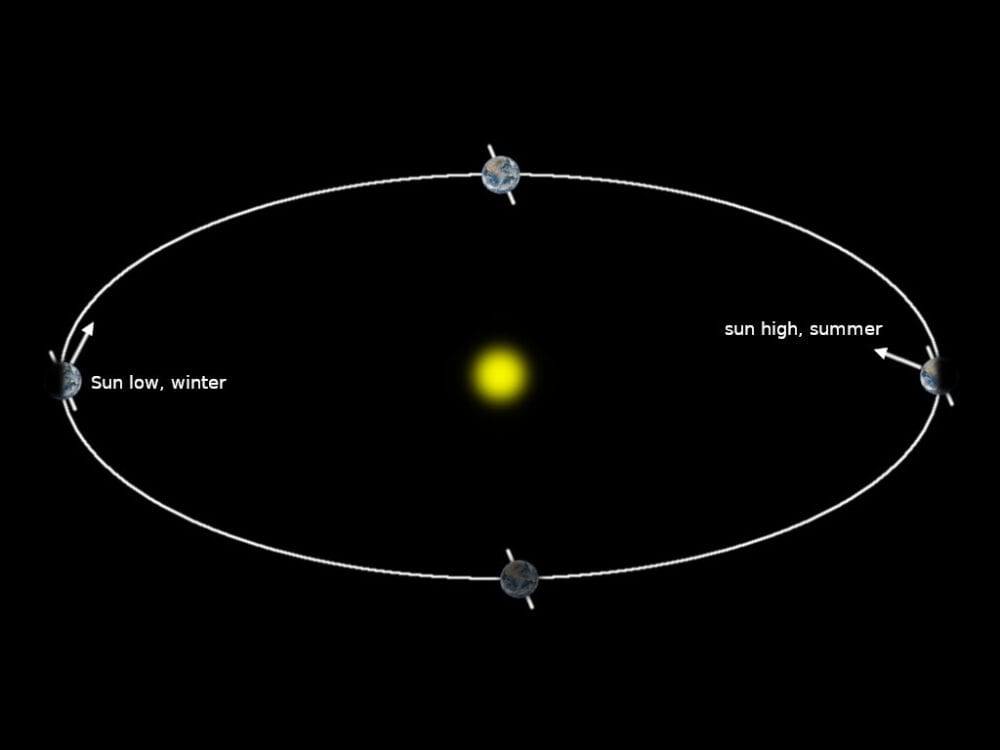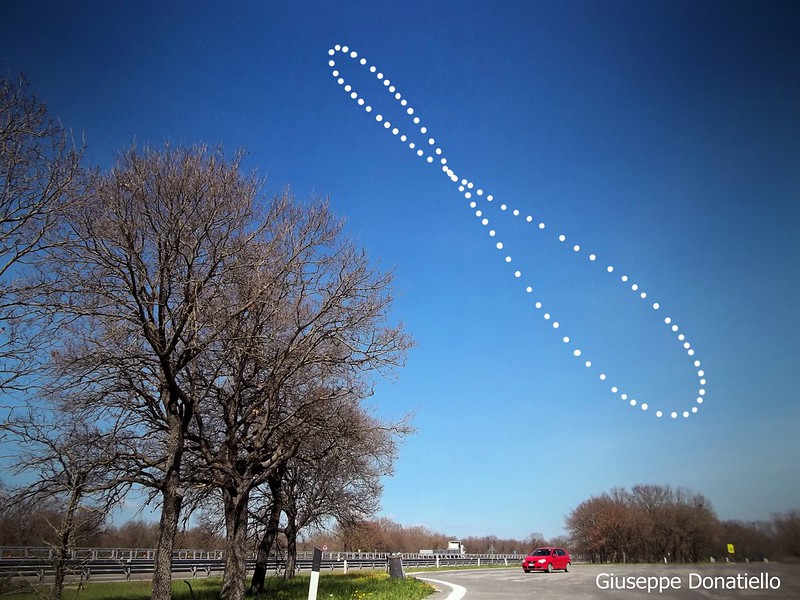By Akkana Peck
The sun rises in the east and sets in the west, right?
This is true, but we’re not actually seeing the sun move. When the sun rises and sets, you’re seeing the effect of the earth rotating on its axis.
But put that aside for a moment. The sun does rise in the east and set in the west … but not always in the same place, and not always at the same time. And those changes are what causes our seasons, and a whole host of other weather phenomena.
The Earth’s axis is tilted about 23½ degrees. That means that as we make our yearly trip around the sun, part of the time Earth’s northern hemisphere is tilted toward the sun, and other times it’s tilted away.

When we’re tilted toward the sun, that means the sun rises earlier, sets later, and gets a lot higher in the sky. So it’s hotter, and we call that summer. When we’re tilted away from the sun, in winter, the sun stays lower and there are fewer hours of daylight, and so we’re a lot colder.
And those seasonal changes in how much sunlight we get cause all sorts of other effects — like ocean currents, the motion of the jet stream, and the seasonal warming that causes our crazy spring winds.
North and South Wanderings

The sun is farthest north on the summer solstice. This year, that’s June 20, and at noon the sun will be 77 degrees up (that’s 1 PM on our clocks due to Daylight Saving Time). We’ll have 14½ hours of daylight on that day.
On December 21, the winter solstice, the sun will only make it up to 30 degrees above the southern horizon at noon, and it will only stay up for 9½ hours.
This “solargraph” taken from Budapest used a pinhole camera (with actual old-fashioned film!) to capture the sun’s path through the sky over a whole year. You can see how much its path changes in summer versus winter.
Where Does the Sun Rise and Set?
Notice in the solargraph that the sun’s rising and setting position also changes over the year. It doesn’t rise exactly due east, or set exactly due west, except on the spring and fall equinoxes.
You can see this for yourself at home. Make a note of where the sun rises or sets today against a local landmark, like the Sangre de Cristo Mountains or Jemez Mountains if you can see them from your house. Then check again a week from today, and again in a month. How much does it change?
Be careful when doing this: don’t ever look at the sun directly, since it’s bright enough to hurt your eyes even when it’s rising or setting. Check it just as the last bit of the sun is disappearing behind the Jemez, or better yet, take a photo as it’s setting (but don’t look through the camera’s viewfinder, if it has one; just use the LCD screen).
The Analemma
There’s more to the sun’s motion than just north and south. Because the Earth’s orbit isn’t a perfect circle, sometimes we move faster in our orbit, sometimes slower. So sometimes the sun seems to lag a little behind, or race a little ahead, of where you’d think it should be — for instance, it might reach its highest point at 12:17 PM, or 11:46 AM, instead of exactly 12:00 PM noon (or 1 PM MDT).
If you pointed a wide-angle camera at the sky and took a photo every day at the same time over a whole year, sometimes the sun would be a little farther left, sometimes a little farther right, as well as moving north and south. You’d get a picture like a figure-eight, or a bowling pin:

That’s called the analemma. You may have seen it on globes of the Earth. The top of the figure-eight is near the summer solstice, when the sun is high; the bottom is near the winter solstice. If you take your photos at noon, the figure eight will be roughly vertical; if you take it in the morning or evening, it will be tilted, as in this morning analemma by Giuseppe Donatiello.
Take a closer look at the sun through today’s craft and outdoor challenges!
